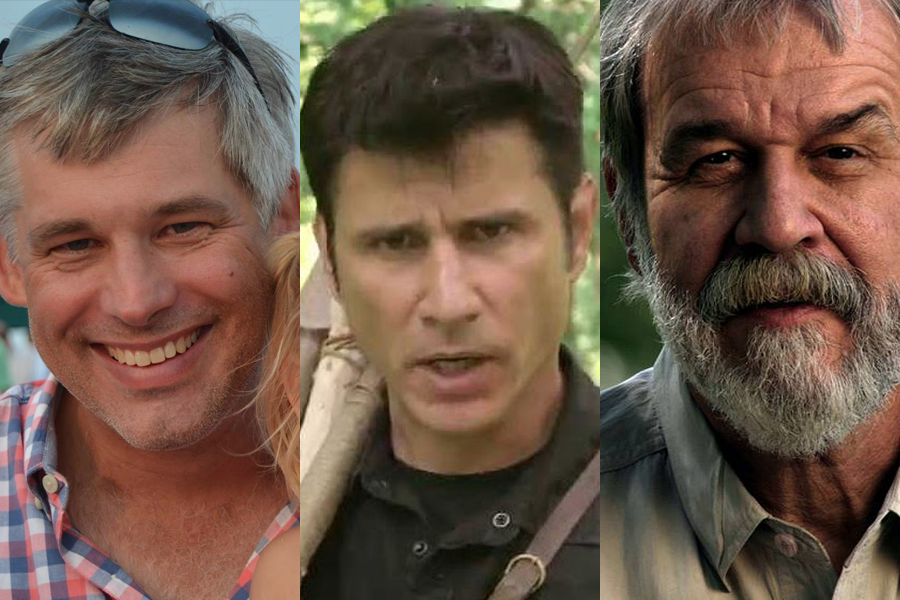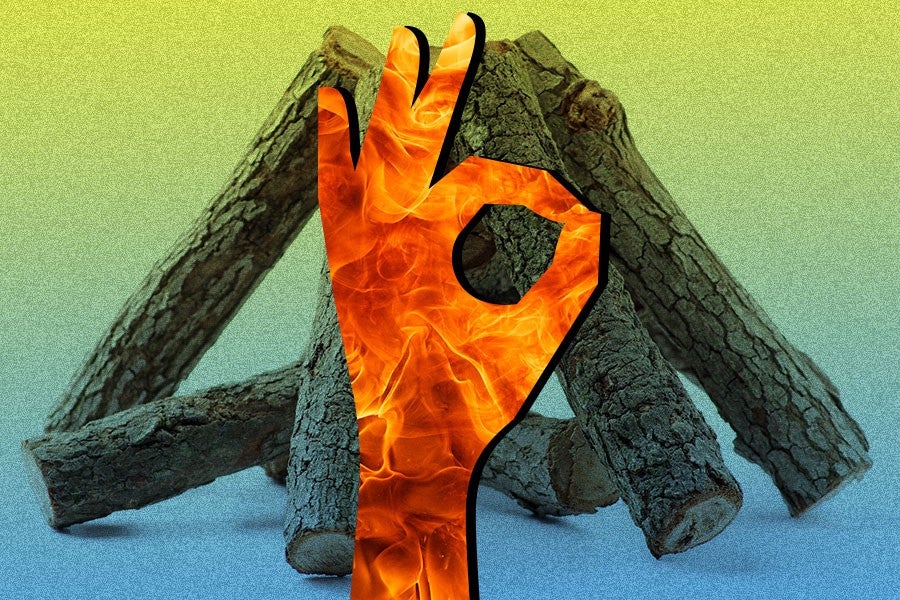When I was a kid, a dump truck would deposit a mountain of firewood in the driveway of our Connecticut home a couple days before Thanksgiving. My brother and I got a nickel a log to stack it in the backyard. Who can possibly burn this much wood? I’d think, exasperated and slivered. What are we, Eskimos?
No, we were New Englanders with a near-constant plume of smoke billowing from our colonial chimney six months of the year. It’s not surprising, then, that my brother Mark and I would grow up to become autumnal fire nerds.
“Can’t wait to show you this cool thing I got called The Grate Wall of Fire,” Mark recently emailed me in anticipation of my upcoming holiday visit, “which is on a 45-degree angle and automatically pushes logs to the back of the firebox as the fire burns!” He was equally fond of a newly installed, iron-plated “fireback” that redirects heat into the room rather than up the chimney.
But let’s face it, we’re not all Mark.
Which means a couple of things: 1) Our fire won’t be nearly as aesthetically pleasing or efficient as it could be on Thursday — and thereby, a potential holiday party fail; and 2) more worrisomely, we might burn down the house with all of that well-intended heat and light — an epic holiday party fail (as well as an existential threat to everyone in attendance).
So to help out — and keep your Thanksgiving guests impressed and/or safe — I recently reached out to Mark, the father of five of my nieces and nephews and the current keeper of the family flame, as well as two other fire experts: Captain Mikel Hawke, a Green Beret and Extreme Adventure Instructor; and Buck Tilton, a wilderness medicine expert and author of 40 books on the subject.

Here’s their advice on how to keep a happy, safe and eye-popping hearth this holiday season…

What’s the most important thing to consider when building a fire?
Hawke: Always start small, simple and slow: A small foundation, with airflow under it. A simple teepee to allow the flame to catch. And a slow build that feeds the flame upward as it grows.
What’s the best type of wood to use?
Tilton: “Best” is a relative term, depending often on where you are. In an ideal situation, use fast-burning wood such as sap-rich pine. Pine, spruce and other softwoods ignite relatively easily, but they burn relatively quickly. If you can, add hardwoods such as oak and maple for a slow and hardy burn.
Mark: I don’t care about the type of wood, as long as it’s dry. There’s nothing more frustrating than a fire that just hisses at you and never really gets going. That hiss is the sound of water in the wood escaping. It’s bad news.
Hawke: For survival, use the driest softwoods to get it started, then larger sizes and harder woods. For fireplaces, I prefer the smells of the cooking woods like mesquite and hickory.
Should I use a variety of log sizes?
Mark: It’s a lot easier to start with the thinner pieces until the fire really gets going. Then, once the core is so hot you can barely stand it, it’s extremely satisfying to drop one of those big motherfuckers on there and watch it slowly dissolve.
Do you recommend using newspaper or other fire-starting material?
Hawke: City folk tend to put their newspaper to good work as kindling. Personally, I use whatever is at hand and try to practice field skills at home, too. That said, I do keep some preloaded fire logs on hand for when I’m in a hurry.
Mark: A few years ago, I started getting the paper version of the weekend New York Times in part so that I’d have some paper handy for fire building.
Tilton: Don’t make fire starting any more difficult than it needs to be. Any fire-starting material — and some are available to purchase — make it easier to get a flame going.
What’s the best formation of paper, kindling and logs?
Hawke: I like to twist mine up so they look like a log but have lots of space for airflow. I get a fire with one match every time.
Mark: I usually use three or four of those Fatwood sticks on top of a bunch of newspaper balls. Then I arrange three skinny logs on top of the whole thing, being careful not to squish the whole pile — you need to let the oxygen get in there. That works to get things going. Then I add more logs within the first few minutes.
Tilton: Before you strike a match, place fire-starting material, such as paper, in a heap in the fireplace. Over this build a teepee of kindling. Have more kindling ready. When you have a good blaze of kindling, add larger pieces of firewood. The greater the fire, the larger the pieces of firewood you can add.
Does it need to be below a certain temperature outside to build a fire inside?
Hawke: I have a fire year-round even in the tropics because I can and I love the feel, look and smell. I also value nature so I make sure I’m always boiling water for coffee or tea or cooking with it.
Mark: Our mother’s threshold for a fire is around 60 degrees. But I usually wait until it’s 45 degrees. That said, there’s more to the decision to fire or not to fire than simply temperature. For example, there’s something “appropriate” about having a fire when football is on TV. And what outdoor cocktail party isn’t a little better with a fire in the firepit?
Tilton: No. People’s comfort zone varies greatly from individual to individual. Only you know what temp you want.
What do fires mean to you?
Hawke: We never had fires in the Special Forces as it’s not tactically sound. I did, however, break this rule once. I was working with some Army Rangers on a training mission. They were so tactical that they slept in a depression that had filled with water so only their eyes, noses and weapon barrels weren’t submerged. The temperatures plummeted overnight, and they all had uncontrollable shakes from hypothermia. After being on recon all night, I returned at first light to find them in a mess. I made a poncho shelter out of all of our ponchos and built a big fire, getting them warm, dry and operational again.
Tilton: The number-one reason people die in the wild outdoors is loss of body heat. On many occasions, fires have made a night in the wilderness pleasant when it could’ve been quite a bit different. On others, they’ve saved my life.
Mark: My fire-making obsession comes from our father, who’d spend hours in front of our sweltering wood-burning stove getting the dampers set just right to maximize oxygen levels. Now, my Instagram feed is loaded with pictures of fires and my own kids sitting in front of them.
There’s something about making a fire that makes me feel like I’m home. I love that my kids enjoy sitting in front of the fire and reading, playing board games and/or watching TV. It’s gotten to the point where they’ll ask me, “Daddy, will you put on the fire?”
I guess the generational baton has been passed.

